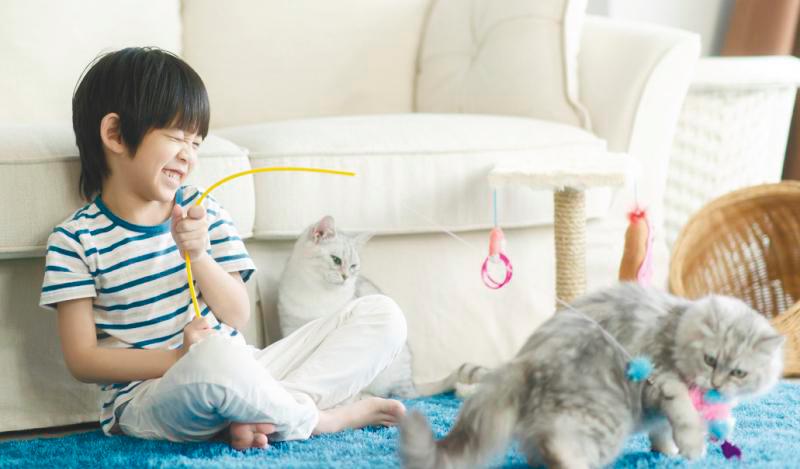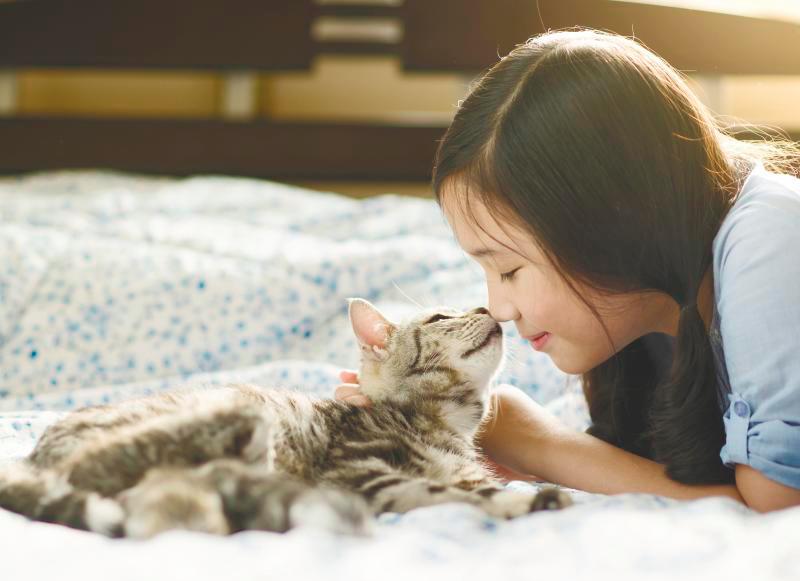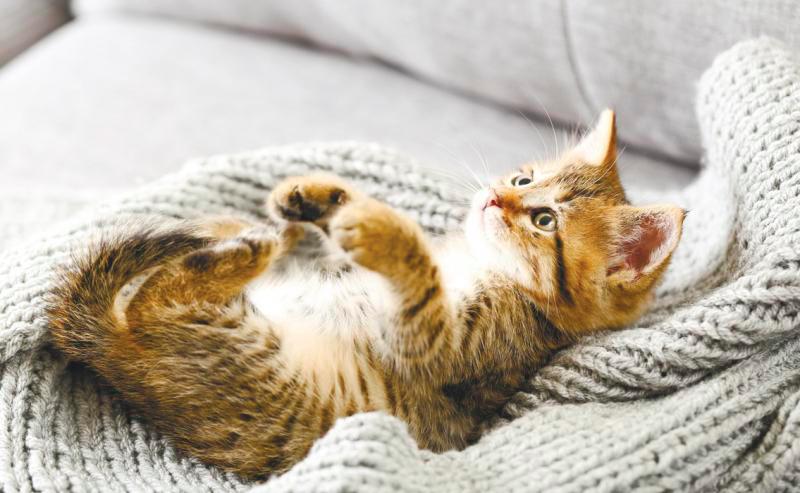AS a cat owner, you obviously want your feline friend to lead a healthy, active life. It’s not only about the food and shelter that you provide, but also the way you play with them. Kittens and cats need to play, as it is important for them to engage in natural predatory behaviours, and to exert control over their social interactions.
By providing them with an appropriate outlet and the necessary resources for play, either through interactive games or other suitable toys, they will be able to hunt, stalk, and act out other natural, instinctive behaviours.
Unfortunately, many of us have never taken the time to learn what makes our cats really want to play.
Why is it important to play with cats?
Play enhances overall development and coordination in young kittens. As kittens grow older, their play evolves, and at 14 weeks old, their play is primarily directed at things, which they stalk, pounce on, bat, grip, and bite.
These are the skills required for hunting. Play releases your cat’s predatory instincts, relieves boredom, prevents behavior issues, and helps prevent weight gain and health issues. For indoor cats, this is crucial.
Here’s some tips and also proper ways to play with your cat. Try it today!

Stimulate your cat’s natural instincts to play
Cats’ play behaviours are rooted in their natural instincts, particularly hunting behaviours. Cats enjoy stalking, chasing, pouncing, and attacking, and they are especially drawn to movement.
All you have to do is make time to play with your cat. This can be done by hanging or throwing toys for your cat to jump on or chase. You can also trigger your cat’s natural hunting instincts by playing with toys that resemble prey.
To discover if your cat is interested in playing, try giving him toy mice, laser toys, or chirping toys.
Other than that, you could also try catnip. Most cat owners are familiar with catnip, but other plants such as silver vine, mint, honeysuckle, or herbs like basil and rosemary could also stimulate their senses.
Rewards them with food or treats
Pet cats do not need to hunt for their food, but utilising a food ball can add some excitement and action to feeding time. It’s a ball that is somewhat larger than a tennis ball, and can hold dried cat food. Pieces of food fall out as the cat pushes and strikes the ball with its paws. You can try to find them near your pet store or get it online.
Cats are actually very similar to humans. We are happy when we are rewarded for completing a successful task. The same goes for our cats! Try giving them cat treats after you’ve finished playing with your cat. They’ll be more inclined to play it again the next time.

Discover your cat’s preferred game
Since every cat is different, you’ll need to experiment a little to figure out which kinds of play your cat loves. As some cats are more active than others in terms of chasing and so on, this is an excellent time to explore and interact with your cat!
Try different toys, playing at different speeds, and playing at different times of the day. Your cat will love the extra attention, and you’ll quickly learn how to play with them in the style that they prefer.
Duration of playtime
How frequently should you interact with your cat? Two daily play sessions would be ideal for both you and your cat. You may discover that having a playtime right before bed would help calm down a cat that is prone to misbehaving at night.
Your cat should get at least an hour of active play time per day. This can be divided into as many play segments as you and your cat want.
As for how long, several cat health and behaviour experts make similar recommendations, ranging from 20 to 60 minutes of playtime per day. Cats usually have short bursts of energy, so playtime should be broken up into 10 to 15 minute segments.

Don’t use your hands or body to play
It may be tempting to tickle your cat’s belly when they are lying down, or to tease a kitten with your fingers, but it is best to refrain from using your hands or body. It’s cute to let that kitten nibble on your fingers now, but when your cat is fully grown, those bites could be painful, and lead to other serious injuries.
It’s hard to break your cat’s habit of treating your body like a ‘toy’, which can lead to behavioural issues. Instead of getting too physical, stick to playing with appropriate objects to help deter your cat from biting or chasing after you.
Last but not least, give your cat a lot of opportunities to engage in active play with you throughout the day, as well as by enriching his environment, giving him a chance to let out his playful energy in a healthy manner.










